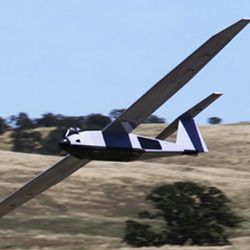
Over the last few years, military drones have changed the face of combat and the way the United States and other governments stalk terrorists. But somewhat hidden amid the discussion about these unmanned air vehicles (UAVs) is the fact that there’s growing demand for commercial drones. "They can be used for anything and everything that requires surveillance," observes Salah Sukkarieh, director of research and innovation at the University of Sydney’s Australian Centre for Field Robotics.
The potential uses encompass fields as diverse as agriculture, mining, environmental monitoring, industrial security, weather forecasting, and commercial photography. Already, a number of manufacturers are selling UAVs that range from toy drones costing less than a couple hundred dollars to sophisticated devices with auto takeoff and landing capabilities that come with a price tag in the hundreds of thousand of dollars. It’s even possible to operate some drones using an iPhone as a remote control.
At this point, the major obstacles to the widespread use of commercial drones are various governments’ restrictions on airspace and the operational costs of investing and operating the devices, Sukkarieh says. However, while the technology has matured to the point that it’s feasible to use in commercial settings, many organizations and individuals have deep concerns about how these machines will be used and how it might impact privacy. For many, the idea of drones flying over houses and possibly spying on celebrities and neighbors isn’t appealing.
Sky’s the Limit
The earliest known drones — essentially remote controlled airplanes — date to the beginning of the 20th century. UAVs were used during World Wars I and II and by the 1960s the U.S. military began investing in the technology in earnest. But after the 9/11 terrorist attacks in 2001, UAV technology began to receive widespread attention. In recent years, drones have been deployed in Afghanistan, Pakistan, Somalia, and other areas.
Meanwhile, commercial manufacturers have entered the fray. A number of firms, including 3D Robotics and Pulse Aerospace, now sell aircraft that’s specifically designed for commercial, research, and security applications. For example, the Vapor PA-01 Unmanned Aircraft System from Pulse delivers more than one hour of flight time on a battery charge along with enhanced flight stability. It provides an automatic camera trigger that aids in aerial mapping and includes integrated ground tracking through a differential global positioning system.
Some businesses have already turned to drones to tackle difficult, time-consuming, and sometimes previously impossible tasks. For instance, Los Angeles photographer Daniel Gárate has used UAV’s to shoot videos of high-end residential properties for real estate agents. In South Africa, a rhino farmer, Clive Vivier, has used drone technology to combat poachers that are driving the animals towards extinction. The Arcturus T-20 drone can fly for 16 hours without refueling at a height of up to 15,000 feet. Meanwhile, organic farmers in Northern California are using drones to spot irrigation leaks, and oil companies in Texas are using them to protect facilities.
The possibilities are almost limitless, Sukkarieh points out. In the U.S., the commercial drone market is poised to take off as a result of President Barack Obama signing a new federal law in February 2102 that compels the Federal Aviation Administration (FAA) to authorize the use of drones for commercial purposes, while allowing law enforcement agencies to expand the use of the technology as well. The UAV must weigh less than 4.4 pounds and fly at an altitude below 400 feet. The law also authorized the expanded use of drones by 2015.
Beyond the Horizon
The FAA predicts that upwards of 10,000 civilian drones could be airborne in U.S. skies by 2020. Worldwide the numbers could reach well into the hundreds of thousands. Trade organizations such as the Association for Unmanned Vehicle Systems International are working to promote hardware and software development. The corporate world is taking notice too. FedEx CEO Fred Smith expressed interest in deploying commercial drones in a 2009 blog post. "Unmanned cargo freighters have lots of advantages for FedEx: safer, cheaper, and much larger capacity," he noted.
Yet, while few doubt the impact of commercial UAVs, there are growing concerns about job loss and privacy. "In the U.S., there is nothing in statutory or common law that prevents the widespread collection of information using drones," says Amie Stepanovich, director of the Domestic Surveillance Project at the Electronic Privacy Information Center (EPIC). "There is a vast amount of data that could be collected on individuals using aerial surveillance, especially if it is combined with facial recognition and other emerging digital technologies."
Among other things, it’s possible to track a person’s movements, identify what they are carrying and spy on them as they sit in their house or backyard. "We are in the early stages. We’re not sure at this point what could be derived from all the data," Stepanovich notes. "But once you begin to connect all the data points you could wind up with highly intrusive technology."
For now, several U.S. states have placed a moratorium or restrictions on commercial drones. However, officials around the world will be forced to deal with the issue over the next few years. Stepanovich believes that the illegal use of drones could be extremely difficult to police. EPIC is working to enact regulations that would provide basic protections, she says. It has submitted a petition to the FAA addressing major concerns. "There must be some level of transparency so that people know what type of surveillance they are subjected to and how the data will be used," Stepanovich says.
Sam Greengard is an author and journalist based in West Linn, OR.



Join the Discussion (0)
Become a Member or Sign In to Post a Comment